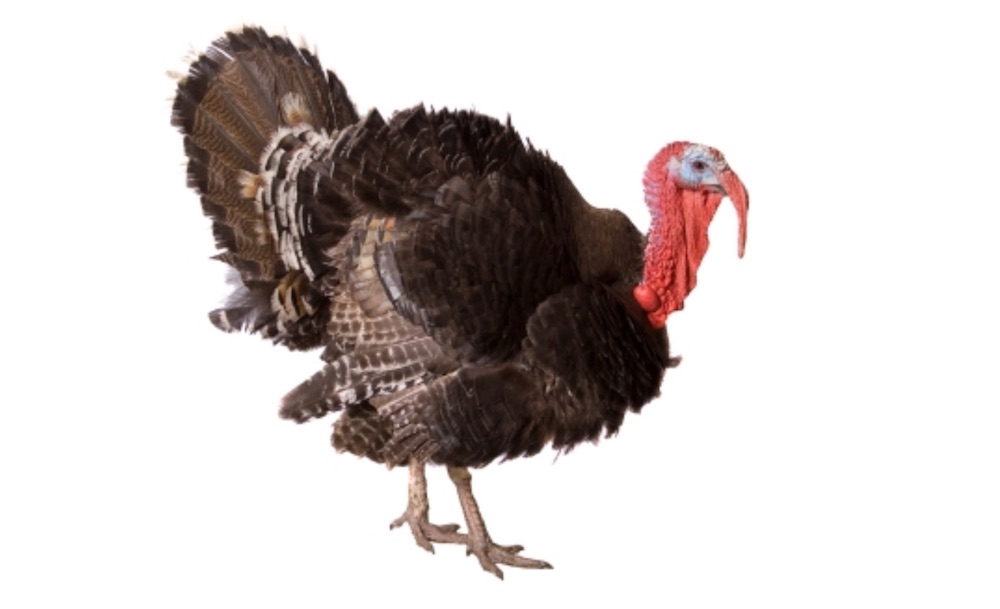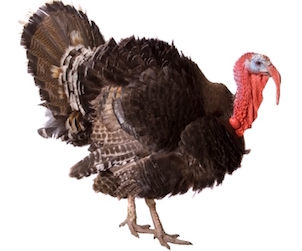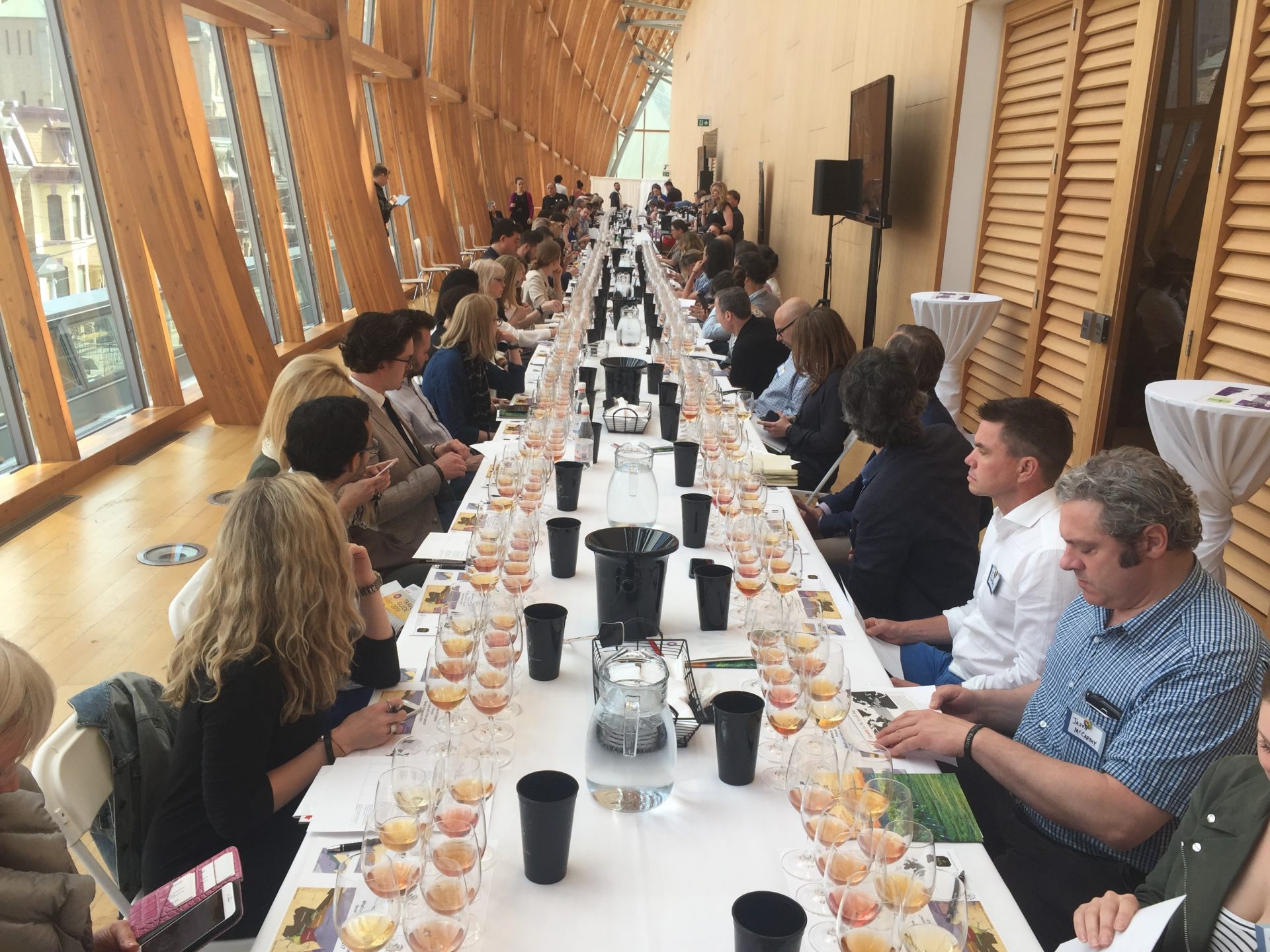Malcolm Jolley says pairing to the Thanksgiving meal is futile, so just drink whatever wine you like.

Challop (noun) – plural : challops
Pronounced “chah-lop’
1: Abbreviation for challenging opinion.
2: An irregularly published column on the website Good Food Revolution.
Like the honour among thieves, even lifestyle journalists have something like a code of behaviour. Part of that code is the general understanding that one doesn’t publicly criticize a colleague’s writing. Actually, this is probably more about being polite than some kind of natural law, especially among wine writers. There aren’t that many wine writers, and we all more or less go to the same events. So, while I am quite certain that any number of things I’ve written about wine have caused much eye rolling among the qualified scribes of the vine, none of them have ever actually called me on them. This is largely because the likelihood of having to sit next to me for two and a half hours at a winemaker’s lunch and tasting next week would be high. It would be awkward.
So, it is with some trepidation that I post my general disagreement and uneasiness with the subject line of newsletter email I received this morning. It read “Gobbling good wines for Thanksgiving at the LCBO”. I don’t dispute that there are good wines at the LCBO, nor even that they are good Thanksgiving (a good wine is good for pretty much anything, really). It’s the “gobbling” part that bothers me because, as I feared, down into the body of the email was a link to its author’s tips to pick Thanksgiving wines. A further investigation of the author’s website revealed an entire category of wine reviews dedicated to labels that supposedly go well with turkey. And they might well, but…
The Thanksgiving meal, as it traditionally served in Canada, constitutes more than turkey. A lot more: there is gravy, stuffing, mashed potatoes, divers root vegetables, maybe something green like Brussels sprouts drenched in butter, and even pumpkin pie. (Does anyone stop drinking wine at the point of pumpkin pie? I didn’t think so.) The point is there is no wine known to humanity that could possibly “perfectly pair” with the totality of the typical Thanksgiving dinner plate. It can’t be done, so don’t bother trying.
This revelation, that Thanksgiving wine tips were a kind of delusion, came to me fairly early in my career as a wine writer. Like most of my revelations, it had a divine source: my wife pointed it out. I was actually auditioning some light red, likely an Ontario Gamay or Pinot Noir, the week before the big day on the occasion of weeknight chicken breast dinner – as close a stand in for the big bird as I could muster. Just at the point where I thought I had achieved my very own gobbling good recommendation, my wife looked at me like I was insane and said, “what about the gravy?”. She was right, and I ended up recommending a big Côtes du Rhône instead, because it was really well priced. I have never looked back.
If I had been paying attention, I could have had this revelation earlier. One of the very first chef interviews I ever did was with Vikram Vij on the occasion of the publication of his first cookbook. I had read that he was an oenophile and a big supporter of BC wines. How, I asked him, could he pair wines, especially big Okanagan reds, with his restaurant’s spice-rich dishes? He laughed and exclaimed, “You can’t!”. Then, he explained his technique for “pairing” wines to Indian food: he takes a sip of wine, enjoys it, swallows it, then takes a bite of food, enjoys it, swallows it, then he takes a sip of wine… You get the picture.
So take it from Vij, don’t stress about pairing the Thanksgiving wine, and don’t believe anyone who says they know how. There is no turkey wine.








Malcolm, I take your point that it is impossible to ‘perfectly pair’ any wine with the totality of the harvest table, indeed not enough attention is paid to the secondary dishes wheneve we dine. But let us throw out the “perfectly” part and not the wine which does a perfectly fine job at bridging these diverse dishes: Riesling!
More specifically, the Mosel Kabinett-style Riesling; low alcohol, residual sugar, high acid, intense flavour. Gravy, you say? Rieslng’s acidity cuts through the fat of most Thanksgiving dishes while the touch of sugar matches the sweetness also found in Grandma’s glazed carrots or mashed turnips. We love the lower rate of alcohol to aid in our holiday stamina and fight off the tryptophanic sleepy-juice effect common to many gatherings. The intensity of Riesling’s pure flavours offer a delectable counterpoint to the wash of heavier flavours found on the table. It’s why we love cranberry sauce!
Happily, this style of wine is also frequently found in Ontario, but I will admit that I do lean more towards an Alsatian-style Riesling for slightly higher alcohol and a spicy texture which can carry the weight of most Thanksgiving dishes more to my taste.
My two cents!
You make a compelling and thirst inducing case.